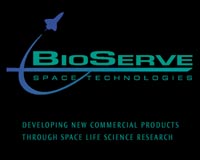 |
KSC FL (SPX) Oct 29, 2010 STS-133 Commander Steve Lindsey and his crew arrived at NASA's Kennedy Space Center in Florida this afternoon as the astronauts and launch team prepare to begin the countdown to Monday's launch of space shuttle Discovery. "I want to say a word of thanks to the team here are Kennedy Space Center," Lindsey said. Talking about repairs last weekend to a crossfeed flange inside Discovery, he said, "They did a fantastic job getting it ready for us. " Lindsey, Pilot Eric Boe and Mission Specialists Michael Barratt, Tim Kopra and Nicole Stott touched down at the Shuttle Landing Facility at about 3 p.m. EDT aboard three T-38 jet aircraft. Mission Specialist Alvin Drew arrived at approximately 4 p.m. Drew's arrival was delayed due to an issue with his aircraft causing him and his pilot to return to Houston for another T-38. Discovery and its astronauts will launch Monday at 4:40 p.m. EDT to take the Permanent Multipurpose Module to the International Space Station, along with experiments, supplies and equipment. "We're really looking forward to getting up there and doing our part to add to it again," Barratt said.
Counting Down to Launch The famous landmark displays the precise hours, minutes and seconds leading up to and after spectacular shuttle liftoffs. The countdown clock and many other clocks around the center are maintained and exactly set by the IMCS Timing and Imaging Technical Support Group with QinetiQ. From a room in the Launch Control Center, Lead Electronic Technician Robert Wright and several timing technicians monitor and distribute the official time to facilities at the center, including the Launch Control Center firing rooms. During launch countdown and preflight tests, the timing room is staffed 24/7. The group sets and monitors several panels of timer controls. Above the panels are digital clocks that display various times, including the launch window remaining, hold time remaining, the countdown clock time and GMT time. They also support preflight tests, such as the Terminal Count Demonstration and the Shuttle Final Countdown Phase Simulation, a launch team training exercise. "Timing is critical to us," said Steve Payne, who is a NASA shuttle test director at Kennedy. "The launch window is very limited and it is very important that all of the clocks are displaying and counting down the correct time." For shuttle launches, Payne said call to stations is usually 73 hours before the actual launch time. At that time, the NASA test director communicates with the ground launch sequencer engineers and they in turn, talk to the timing group and give the "go" to start the countdown clock. "We double and triple check our times. We target launch times down to the second, and things happen quickly as we approach T-0. These numbers are critical to us and they must be correct," Payne said. The group sends the timing signals to all of the computer system servers in the firing rooms, the ground launch sequencers, Launch Complex 39, the Shuttle Landing Facility Control Tower, Vehicle Assembly Building, orbiter processing facilities, Central Instrumentation Facility, Operations and Checkout Building, Space Station Processing Facility, and the News Center. "We are the source for the official launch and landing time," Wright said. "We have redundant systems in case there are power failures or glitches in the system." Wright said they also send the precise timing signal to Johnson Space Center in Houston, Marshall Space Flight Center in Huntsville, Ala., NASA Headquarters, Wallops Flight Facility in Wallops Island, Va., Goddard Space Flight Center in Greenbelt, Maryland and the Morrell Operations Control Center at Cape Canaveral Air Force Station. During launch countdown, timing signals also are sent to a predetermined number of universal camera sites located near and around the launch pads and the Banana Creek viewing site for the high-speed cameras. It's not just the time that needs to be set to perfection, though. The group checks the bulbs inside the countdown clock quarterly and double-checks them about a week before it is turned on for a launch or video shoot. During the quarterly maintenance, technicians run through the numbers from 1 to 9, making sure each bulb lights up properly. Surprisingly, the light bulbs used in one of the most watched timepieces in the world are the same type of 40-watt light bulbs found in your local grocery or hardware store. The official countdown begins at 3 p.m. EDT, Friday, Oct. 29, and the clock, located on the lawn in front of Kennedy's News Center will go live at 2 p.m., Saturday, Oct. 30, counting down to Discovery's STS-133 launch to the International Space Station at 4:40 p.m. Nov. 1.
Share This Article With Planet Earth
Related Links station at NASA Shuttle at NASA Shuttle at NASA Watch NASA TV via Space.TV Space Shuttle News at Space-Travel.Com
 Discovery Swan Song Carries Two Final Payloads From Boulder
Discovery Swan Song Carries Two Final Payloads From BoulderBoulder CO (SPX) Oct 28, 2010 NASA's space shuttle Discovery will make its swan song flight Nov. 1 carrying two University of Colorado at Boulder-built biomedical payload devices, including one to help scientists better understand changes in the virulence of nasty bacteria in the low gravity of space as a way to help researchers prevent or control infectious diseases. The experiments will be carried aboard Discovery in ... read more |
|
| The content herein, unless otherwise known to be public domain, are Copyright 1995-2010 - SpaceDaily. AFP and UPI Wire Stories are copyright Agence France-Presse and United Press International. ESA Portal Reports are copyright European Space Agency. All NASA sourced material is public domain. Additional copyrights may apply in whole or part to other bona fide parties. Advertising does not imply endorsement,agreement or approval of any opinions, statements or information provided by SpaceDaily on any Web page published or hosted by SpaceDaily. Privacy Statement |